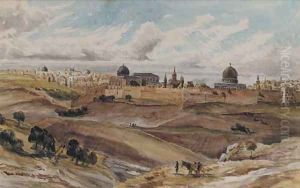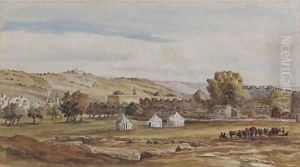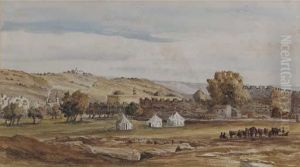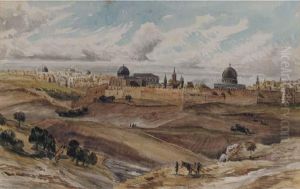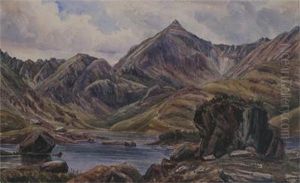Charles Gilbert Heathcote Paintings
Charles Gilbert Heathcote was an English artist known primarily for his work as an amateur photographer. Born in 1830, Heathcote was part of the 19th-century movement that saw the growth and development of photography as a popular discipline and form of artistic expression. While not as widely recognized as some of his contemporaries, Heathcote's contributions to the field of photography, particularly in the area of travel photography, are noteworthy.
Heathcote's work as a photographer began in the mid-19th century, a period that coincided with the early years of the photographic revolution. The invention of the daguerreotype in 1839 by Louis Daguerre had opened up new possibilities for capturing images, and this technology rapidly developed throughout the century with the advent of the calotype and wet collodion processes. Heathcote embraced these new technologies and was part of a wave of amateur photographers who explored the medium's potential.
During his career, Heathcote traveled extensively, often documenting his travels through his photography. His images provide valuable insights into the landscapes, architecture, and cultures of the various regions he visited. His work includes a range of subjects from portraits to landscapes, and architectural studies, reflecting the Victorian fascination with the world and the desire to document and understand it.
Despite his passion for photography, Heathcote's work remained relatively obscure during his lifetime and has only received modest attention posthumously. However, his photographs are valuable historical documents that offer a glimpse into the visual culture of the 19th century. Heathcote's death in 1910 marked the end of his contributions to the world of photography, but his surviving works continue to be appreciated by historians and collectors interested in the early history of this art form.
